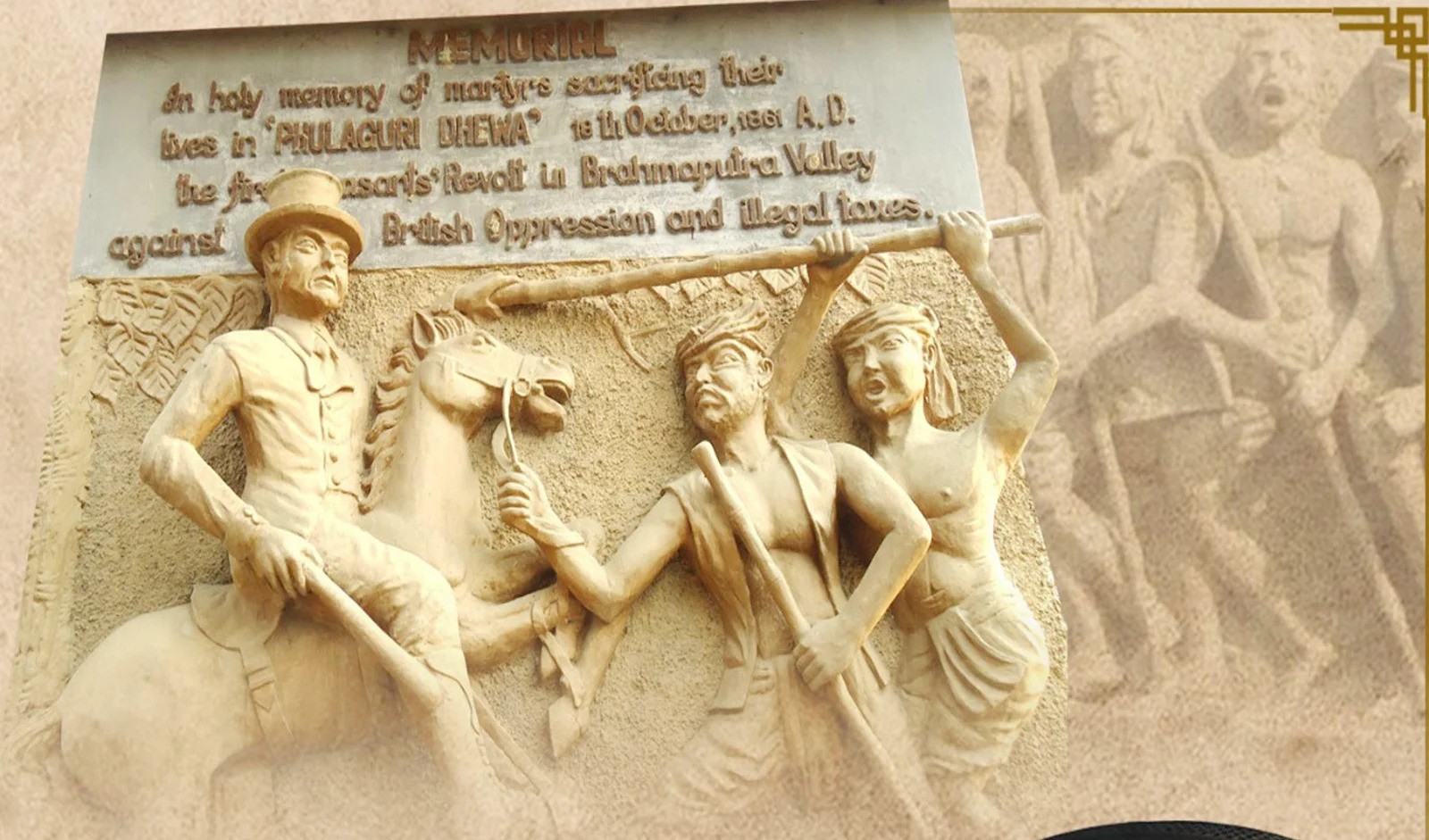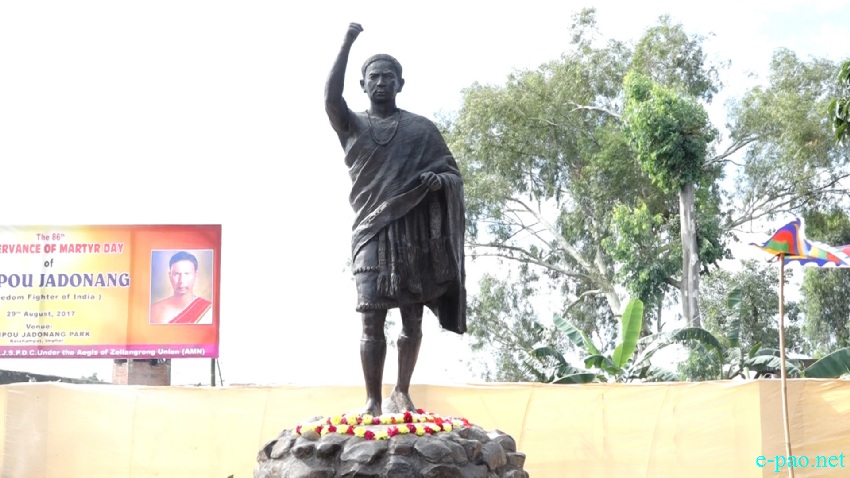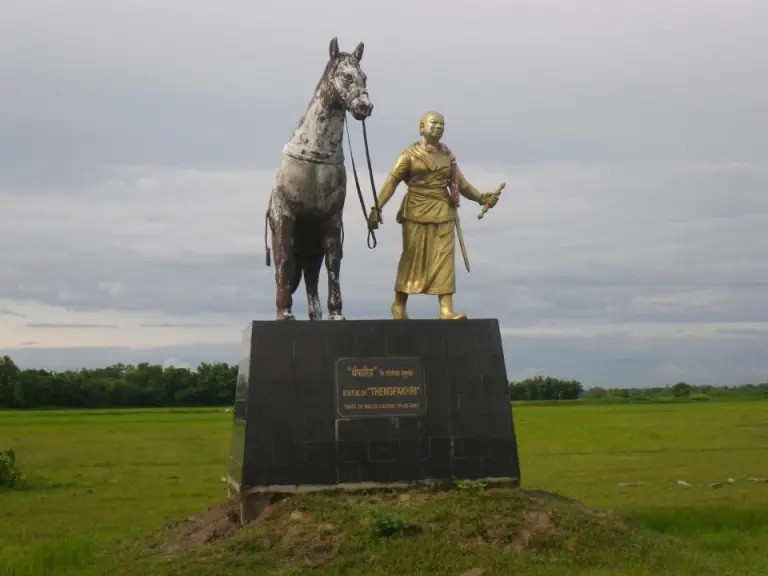By Dr. Indrani Medhi (Assistant Professor, Dispur Law College)
Abstract : Peasants who constitutes the largest section of mankind plays a detrimental role in shaping the destines of mankind. Literally a peasant can be defined as one who tills the land. The term peasant movement or agrarian movement refers to all kinds of collective attempt of different division of people either to seek redresses of their grievances or to change the exploitative nature of the system. Peasant conflicts against the British Rule are a common feature of 19th century colonial India. Erosion of the traditional form of authority and increased economic pressure upon the peasants were the reasons behind these uprisings. The amendments that the British launched in the revenue system led to the disruption of the agrarian society causing prolonged and widespread suffering. In Assam the oppressive taxation measures of the British like the imposition of the grazing tax to tax on opium left the people overburdened. The amount and forms of revenue were so high that people became restless that people rose in rebellion against the British authorities. The first such popular revolt broke in the year 1861 at Phuluguri. Ban on poppy cultivation had affected the peasant economy of Nowgang[i] where per capita consumption of opium was maximum in the province. The prohibitory regulations came as violation to the social habits and traditions of the people. Raij Mel was convened with a view of bringing the participants from the distant lands to take part in the discussions. It left its imprint in the following popular outbreaks of later 19th century.
Key words Agrarian, Opium, Raij Mel.
Objectives of the paper The paper mostly intends to study the peasant uprising in Phuluguri the first of its kind in Assam. It also aims to study the inherent nature of the British agrarian policies that led to the peasant unrest. It also aims at focusing the importance of the Raij Mels and its role in mobilizing the people.
Methodology The study is based on secondary sources that includes books, government journals,newspapers with an aim of presenting a clear picture of the peasant uprising.
Introduction The political fallout of the first Anglo Burmese war helped the British East India company to gain political control over North East India. According to Article II of the treaty of Yandaboo Assam was to cede to the East India Company. It further stated that “ His Majesty the king of Ava, renounce all its claim upon and will abstain from all future interference with the principality of Assam and also contiguous petty states of Cachar and Jayantia.[ii] Following the British occupation, Assam was divided into two regions for administrative convenience: Lower Assam and Upper Assam, with headquarters in Guwahati and Rangpur, respectively. David Scott assumed the role of Senior Commissioner for both Lower and Upper Assam, Colonel Richard who served as the Junior Commissioner was placed in charge of Upper Assam.[iii] David Scott’s responsibilities extended beyond mere commissioner duties; he also held authority over Civil and Criminal Justice and was tasked with revenue collection. Over time, the British expanded their dominion to include Raha and Kaliabar. In spite of this, Sovereign Gobha continued to rule independently under Lalung (Tiwa) kingship until 1835. The British forcefully assumed control on March 15, 1835, led by Captain Lister, triggering uninterrupted resistance from the Tiwas against perceived unjust British imperialism.
At the same time since 1826 the colonial administration took to the supervision of the natural resources of Assam ,a number of experiments were made to transform the land into highly productive resource. Its aim was to transform Assam into an agricultural estate of tea drinking Britons as well as to turn the traditional institutions to suit the colonial pattern of exploitation.[iv] Very soon the idea of introducing British capital, skill and enterprise caught the imagination of the Board of Revenue and the Lieutenant governor of Bengal. Soon after the British introduced far-reaching revenue reforms on several occasions from 1826 to 1853.
The post Sepoy Mutiny era
The great upheaval of 1857 had exhausted the resources of Indian colonial government. To restructure the Indian Finances and to meet the necessary requirements of the British imperial interest James Wilson made certain financial arrangements which further provoked the financial strain upon the peasants. The local authorities were directed to pay more attention to tapping the new resources with an aim of meeting the new expenditure. In 1858 stamp duties were introduced followed by imposition of income tax in 1860 though trivial but made the people anxious. Excise duties were compulsory at the Sadar stations of Kamrup, Darrang and Nowgang. Washing of gold was also framed out, and rights to fish in rivers and beels were offered to the highest bidder. Cutting of timber and reeds and use of grazing fields were also taxable. As a reaction to these enhanced rates popular discontentment increased with every new assessment of land at the enhanced rate and imposition of new taxes .[v]The grievances of the peasantry found expression in Nowgang for the first time in 1861.
Phuluguri: The etymology of the Place
According to Hemkosh, the term “Dhewa” is identical with the word battle. Ganesh Senapati, a Tiwa researcher, affirms that the term finds its origin in the Tiwa word “Tawa,” signifying an encounter or battle. Phuluguri is located in Southern Assam or Nowgang which extends from Jagi Chowky on the Kalang river on the west to river Dhansiri in the east. It is bound on the north by the Brahmaputra river and on the south by Cachar and Jayantia hills. The history of Phuluguri goes as, after defeating the Jayantia king Bijoy Manik, Chilarai the Koch general halted and took rest at Raha Camp where he was given a warm welcome by the people. The place was in abundance with wild and colourful Phul(flower). Chilarai being overwhelmed and enthralled with the natural beauty asked the congregation to keep the name of the place after Phul(flowers) as Phuluguri. While according to other source some tribal people had cleared the wild flowers and jungles and established there a haat(market) on the bank of the Kalang river which was known as Phuluguri Haat. The place is also famous for its agricultural produce and Bao rice. Besides rice the other crops that were cultivated were different types of pulses, matikalai, mug etc.
The uprising
Opium was one of the primary sources of Colonial exploitation in Assam during the British regime. Capt. Welsh, by introducing poppy cultivation in Assam, made the independent tribal people of Assam dependent on poppy. Actually government's prohibitory order was motivated not by compassion but by revenue consideration which ignited people's mind against the authority. Most of the people did not like opium prohibition. To them, opium cures dysentery and malaria, lessen pain and gives longevity. Opium gives them livelihood. Moreover, there is no religious bar of taking opium. Rather, opium eaters used to believe that in Satya age, the poppy trees were in abundance in the Parijat garden of lord Indra. Lord Indra gave this priceless gift to the people of earth. [vi] People of religious bent of mind probably took the ban as an attack on their religion also. Moreover, already hard hit by the increase of taxation on land, prohibitory order irritated them.[vii] The increase in the cultivation of poppy out of which opium was extracted adversely affected the revenues of the government as the Bari and the chapari land where the crop was cultivated was assessed at a lesser rate. After lengthy discussion between the Sadar Board and the local authorities it was decided that Akbari opium would be introduced in Assam. It was falsely hoped by that “when the ryots will have to pay dearly for the drug they will restrict its immoderate use”.[viii]This move of the government was received very well by the planters as this would force the opium eaters to work in their gardens. Moreover to make the opium eaters totally dependent on government opium; they banned the cultivation of poppy in 1861.
Ban on poppy cultivation had affected the peasant economy of Nowgang[ix] where per capita consumption of opium was utmost in the province. The prohibitory order came as an infringement to the social habits and customs of the people. At the same time the Bengal government had also called upon the officers in Assam to report on the possibility of a tax on betel nut and Paan cultivation and imposition of taxes on their houses, baries. Regarding the chewing of betel nut, there are references in the Smriti Sastra and the Kalika Purana. It has great significance in marriage and veneration to God also. Even the criminal could escape and lessen their crime by offering betel nut to their lord. Futhermore, betel nuts determined the social status of the Assamese Society.79 The contemplation of imposition of taxes on the betel nut and the betel leaf was just like an insult and blow to the social status of the Assamese society. Although the official circles dismissed these as rumours but the people found it hard to believe these as rumours as communication was going on between the Sadar Board and the District officials. Moreover the introduction of license tax established the belief particularly among the tribals of Phuluguri that the pan and Betel nut would be subjected to taxation.[x]
As a mark of protest peasants from different parts of Nowgoan assembled at a place near Phuluguri on 17th September 1861. Around 1500 peasants assembled on the same day at and marched to the Sadar court to get scrapped the anti-ryot policies. They placed a petition before the Magistrate against the ban on poppy cultivation and the proposed taxation on Paan and betel nut. But the matter was taken very casually and the officials at Sadr court went on the extent of degrading them. He handled the matter in a very high handed way some of them fined and others detained in the police station. The aggressive peasants then assembled under the shade of the Ahat trees on the banks of the Kalang river with an aim of countering the order of the government.
At last, it was decided that the peasants won’t pay the taxes and also conceived ways and means to bring to the notice of the government about their grievances. Five days Raiz Mel was called with a view of bringing the participants from the distant lands to take part in the discussions. 4Raij Mels or assemblies of common people under the leadership of religious dignitaries, respectable landholders or influential villagers are still current in Assam. Raij Mels were the people assembly organized and controlled by the peasants. In the history of Assam first reference of existence of Raij Mel can be noticed during the reign of Ahom King Laxminath Singha. [xi]Against the decision of incensement of revenue, the people of Darrang revolted against the King through the Raij Mel. 3 Till 1861, Raij Mel was not a revolutionary force against the colonial authority rather it worked by maintaining a good relation with the colonial authority. However, due the introduction of new economic as well as taxation policies which affected the peasant class it started revolt against the British authority from the mid of 19th century. The Raij-mel played a prominent role in the 19th century Assam. On several ocassions when the peasants were circumspect to colonial oppression, people resorted to Raij-mel. In another word, we can take the Raij-mel as the peasants' mobilization campaign. According to M. Sharma, 'the Raij-mels were institutions where the peasants were the most important participating unit’.[xii]Peasants from the neighboring areas like Raha, Jagi, Barpujia Chapari,, Kampur, Jamunamukh etc assembled on 15th of October. Only half of them were armed. The number increased to 4000 by 17th of October. According to Datialia Buranji Panchaoraja(Five kings that is, Sararaja, Kahiraja, Topakuchia, Barapujia and Mikir Raja) and Satoraja (Seven Kings- their area of territorial jurisdiction being Telia, Mayang, Baghara, Ghagua, Sukhnagog, Tarani, Kolbari and Damal) also joined the Mel. Seeing such a huge gathering the police tried to disperse them. The next day Lieutenant Singer, the Assistant Commissioner came and interacted with the leading members and Jati Kalita one of their leaders repeated their complaints about the ban on poppy cultivation and also expressed the uneasiness about the projected sanction on Paan orchards and income. They also repeated that they were considering of placing their complaints on to the higher authorities as the District magistrate was reluctant to take note of their grievances. After deliberations Singer asked the assembled peasants to lay down their arms and go away.
Some of them dispersed while some declined to go way and in the scuffle that followed Singer himself attempted to seize the lathis in their possession and got himself killed. The news of the death of Singer reached Nowgang and Haldhar Barua became alert to cope with the situation. The District magistrate then dispersed a force which fired upon the crowd leading to the death of the several assembled peasants. The tribals were no equal to their counterpart. They failed to match with the sophisticated arms and ammunitions of the British. The tribals were on the other hand were armed with traditional bows and arrows. In the struggle that followed several of them died and many were left wounded. Economy has a big role to play in the revolt. The people of colonial Assam, at large, groaned under economic poverty. Probably, because of this, they could not fight a decisive battle against the administration. Moreover some section of the natives probably informed the administration regarding the ongoing preparation of the rebels and also about their where about which brought their haste-fiasco. The sharp British intelligence and instant and timely decision of the Deputy Commissioner and the Superintendent of Police of the Nowgong were another cause of the hasty-defeat of the peasants of Nowgong. Ever promptness and constant preparedness also brought victory to the Colonial government. Wherever the sepoys went, they went with their fire arms. They were ever ready to face the situation. The rebels, on the contrary, whatever they did, they did that in secret. Moreover, wherever they went, they went not ready sometime they hide their weapons in their clothes or in the jungles. As a result, the rebels could not use them instantly against the enemies. ) Firm conviction and unyielding willpower also helped the British to win over the rebels of 1861. The remark of Henry Hopkinson, the Commissioner of Assam, bears the proof to it. The beginning of a tumult, he opined, is like the letting out of water; if not stopped at first, it becomes difficult to do so afterwards. His conviction helped him to curb the rising tide of 1861 but could not stop it permanently.[xiii]
Women too were not spared from the inhuman atrocities. Many arrests were made including the Lalung Raja was accused of killing Singer. Temporary jails were constructed at Phuluguri where hundreds of peasants imprisoned. Nasing Lalung and other peasant leaders were punished with long term imprisonment. The heroes of Phuluguri were Lakshan Singh Deka, Rongbor Deka, Changbor Lalung, Bahu Kaivarta, Hebera Lalung. By 23 October everything was quiet again with the arrival of fresh military forces from Tezpur and Gauhati. The heroic resistance of the peasants in Phuluguri is still anew in the folk history as Phulughuri Dhewa.
Conclusion
No event small or big goes unnoticed so was the Phuluguri Dhewa. What was unique about this uprising was that that it was first of its kind in Assam in post 1857 era where the peasants stopped the payment of taxes and openly defied the rulers. The immediate cause was no doubt the inflated taxes imposed by the British administrators. Along with the land revenue the British also introduced a number of other oppressive taxes which was intolerable to the common people as well as the ethnic people. There is no doubt that tribal people of Nowgang was hard hit by the prohibitory measures of the British government but it was not the movement of the tribal people alone, they were actively co-operated by the educated and well to do middle classconsisting of small owners , government servants, mouzadars, traders and merchants who were in the same way affected by the newly imposed taxes on income, trades and dealings.[xiv]
Though the uprising failed in the long run and the root cause of its failure was the dearth of leadership. Lakshan Singh Deka and Rongbar Deka were no match to the British counterpart. Secondly the use of traditional weapons like daos, spears failed to match with the better arms and ammunition of the British. Tactless handling by the leaders of the revolt was another cause for the failure of the revolt. The revolt was bound to fail under the prevailing situation but the outbreak gave moral strength and courage to the peasants of Darrang and Kamrup. It was the first mass revolt against the colonial regime. Though the revolt failed but it forced the Colonial government to yield to the will of the people.
[i] Guha, Amalendhu., 2006(1977 Planter Raj to Swaraj Freedom struggle and Electoral Politics) ,First published by ICHR 2006, p 5
[ii] Goswami, Priyam.,2019(2012) The History of Assam from Yandabo to Partition 1826-1947, Orient BlackSwan, Telengana,), p 17,
[iii] Baruah, S.L., Comprehensive History of Assam(1995)., Munshiram Manoharlal Publishers,p 459
[iv]Guha, Amalendhu., 2006(1977) Planter Raj to Swaraj Freedom struggle and Electoral Politics , ,First published by ICHR), p 2
[v]. Datta Ray,B, Deb Bimal J., Sharma Siddeswar (edited)(2011), Freedom struggle in North East India, Omsons Publications, New Delhi, 213
[vi] https://ir.nbu.ac.in/bitstream/123456789/1498/14/14_chapter_06.pdf, accessed on 2nd of January 2022
[vii] Ibid, accessed on 4th February 2022
[viii] Ibid, p 89
[ix]Guha, Amalendhu., 2006(1977 Planter Raj to Swaraj Freedom struggle and Electoral Politics),First published by ICHR ,p 5
[x] Barpujari H.K. (General Editor), .Barpujari S.K., Bhuyan A.C. (edited) 2014(1999), Political History of Assam, Vol 1, Publication Board, Guwahati 2014(1999),p 90
[xi] 2019 JETIR May 2019, Volume 6, Issue 5 www.jetir.org (ISSN-2349-5162) JETIR1905S36 Journal of Emerging Technologies and Innovative Research (JETIR) www.jetir.org 917 Colonial Economic Policy and Peasant Uprisings in Second half of 19th Century in Assam: Understanding the Phulaguri Dhawa of 1861 Mr. Monjit Gogoi Research Scholar Department of History Assam University, Diphu Campus
[xii] Sharma, Monarama.,(1989) 'The peasants uprising and middle class hegemony - the case of Assam', NEIHA -X, , p. 328.
[xiii] https://ir.nbu.ac.in/bitstream/123456789/1498/14/14_chapter_06.pdf, accessed on 22nd of February 2022
[xiv] Barpujari H.K. (General Editor), .Barpujari S.K., Bhuyan A.C. (edited) 2014(1999), Political History of Assam, Vol 1, Publication Board, Guwahati 2014(1999), p 94






